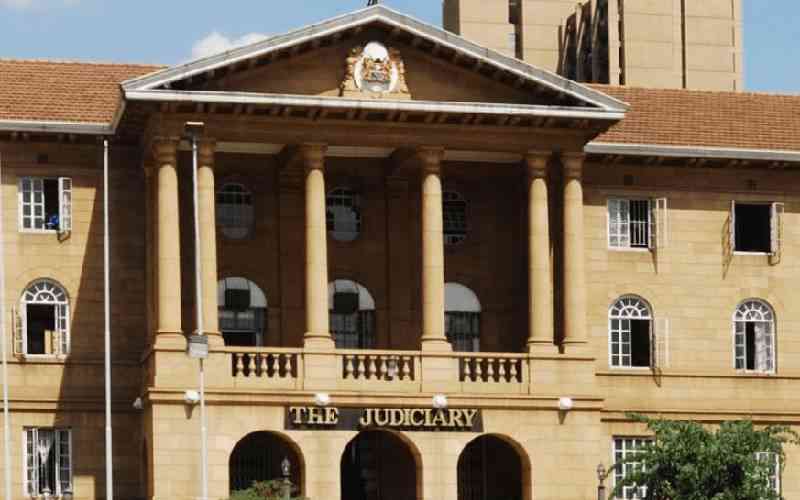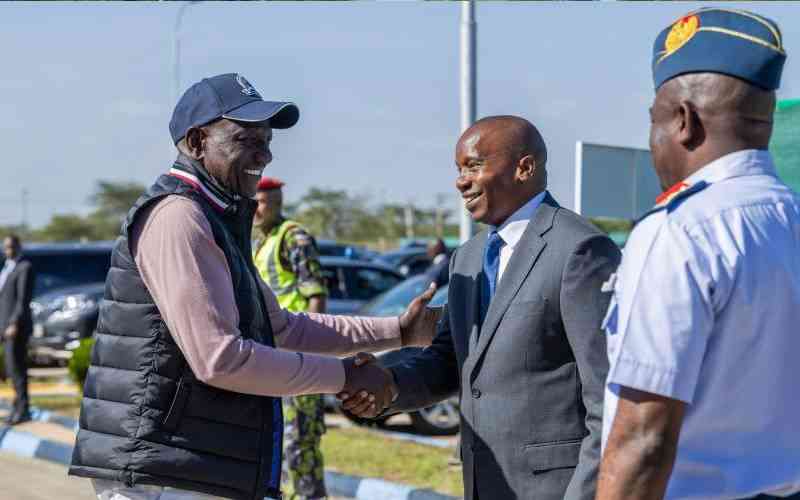There is an air of excitement and expectation at the prospect of a new era of transportation with the launch of the Mombasa-Nairobi Standard Gauge Railway.
Like every foreign initiated mega-project imposed on an African nation the SGR has been shrouded in mystery and intrigue right from the start. Matters have not been helped by our collective quintessential ignorance and amnesia in as much as we all thought the SGR was going to be a high-speed rail that would allow a train to zip from Nairobi to Mombasa at the never-heard-of-before speeds of up to 400 km/h.
Well, the government has officially denied ever having promised such a service thereby deflating the euphoria of many. Instead the SGR will (at least initially) be powered by diesel-driven Class DF8B locomotives which have the same specifications as its predecessors, the French SNCF Class BB 67400 through to Class BB 75000 that operate on the non-high speed sector of the French rail network (called Intercités). These locomotives have top speeds of 140 km/h (BB 67400) while DF8B and BB75000 operate at a more moderate 120 km/h but with more horsepower.
Kenya Railways and other agencies that speak ebulliently for the government tell us that travel times for Mombasa to Nairobi will be drastically reduced. But is this really true? Let’s look at the facts. The high speed SNCF TGV train from Paris’ Gare de Lyon station takes on average between 5h 54min and 6h 06min to Toulouse’s Matabiau station a distance of 677 km. There are two main stops on this route (Limoges and Montauban) which together with several minor ones can be skipped by non-stop trains. Nevertheless one has to change trains at least once on this high speed line.
However the slower Class BB67400 diesel locomotive will most likely stop at every station on the route and may take up to 11 hours to complete the Paris-Toulouse link. Most such services are overnight sleeper trains. Now the recent dry run orchestrated by the contractor (China Roads and Rail) allegedly took 4 hours (actually 6 hours as the train stopped at Mtito Andei for 2 hours).
This is of course pure PR as it makes no technical sense. To start with, the train was not pulling a full load and secondly there was no complication of other trains using the same line. And don't forget the train was going downhill doing a hell for leather sprint with no danger of being sued for any possible accidents. When the actual live event comes on-stream things are going to be much more complicated with signalling, sidings, uphill-downhill changes in speed, braking, and stoppages adding at least another three hours to the journey. So folks, forget the 4-hours-to Mombasa myth, and start preparing for the more realistic 7 to 8 hours instead.
A longer than expected travel time is not the only reality of the passenger SGR. The fare to Mombasa will present the real shocker! As advertised by the contractor and promoters the service will consist of 1st and 2nd Class coaches only. The former will be patronised by corporate clients, rich tourists, the political class (who will pass the fares to the taxpayer anyway) and upper income earners. The latter will accommodate economy class tourists and upper middle income Kenyans. The working class and the unemployed will have to rely on the ‘Old Faithful’ namely, buses, matatus and private cars. Maybe this should be a signal to the financially struggling Kenya Railways to revive the 115 year old ‘Lunatic Express’ a.k.a. the Meter Gauge British-Built Kenya-Uganda Railways and not be tempted by some overenthusiastic government Think Tank into selling the steel rails as scrap to some Indian steel manufacturing mogul!
With the exploding population of the political class (thousands of MCAs and County Government minions heading for sun and sand filled pleasure weekends at Nyali, Diani and Watamu beaches) the passenger side of SGR will definitely make handsome profits. The haulage side of business is, however, unlikely to even takeoff.
Let us face it; the existing rail network is completely moribund due to lack of business. Yes it is slow and hence no prospective passenger will give it a second thought. But what about cargo? How come the only wagons I see at Eldoret all belong to Uganda Railways? Some commentators argue that rail cargo is too slow. Really? I have talked to some transit trailer drivers who tell me it can take up 24 hours to drive from Nairobi to Eldoret. The Kampala train moves from Nairobi to Malaba in about 15 hours. Why are hauliers not placing their cargo on the ‘faster’ trains? The answer is that cartels representing privateers have over the years invested on trailers at the expense of the government owned rail system. Most of the privateers were at one time very high ranking politicians and civil servants. These transport businesses have not only expanded exponentially but have also passed onto sons and daughters who see absolutely no reason to divest from trucks in favour of some so called SGR rail.
I regard myself a self appointed futurist and can prophesy (for free) that unless a real good incentive for transfer of cargo business to the SGR is provided by government, the cargo side of the new rail system is dead before it even starts. The only option I see is for the transport tycoons to be allowed to buy into the SGR and become part-owners with government. Of course this will draw fire from ordinary citizens and the usual activists, but if legislation is put in place to ease the process then the SGR might start making sense and, I might add, some money.
 The Standard Group Plc is a
multi-media organization with investments in media platforms spanning newspaper
print operations, television, radio broadcasting, digital and online services. The
Standard Group is recognized as a leading multi-media house in Kenya with a key
influence in matters of national and international interest.
The Standard Group Plc is a
multi-media organization with investments in media platforms spanning newspaper
print operations, television, radio broadcasting, digital and online services. The
Standard Group is recognized as a leading multi-media house in Kenya with a key
influence in matters of national and international interest.
 The Standard Group Plc is a
multi-media organization with investments in media platforms spanning newspaper
print operations, television, radio broadcasting, digital and online services. The
Standard Group is recognized as a leading multi-media house in Kenya with a key
influence in matters of national and international interest.
The Standard Group Plc is a
multi-media organization with investments in media platforms spanning newspaper
print operations, television, radio broadcasting, digital and online services. The
Standard Group is recognized as a leading multi-media house in Kenya with a key
influence in matters of national and international interest.






